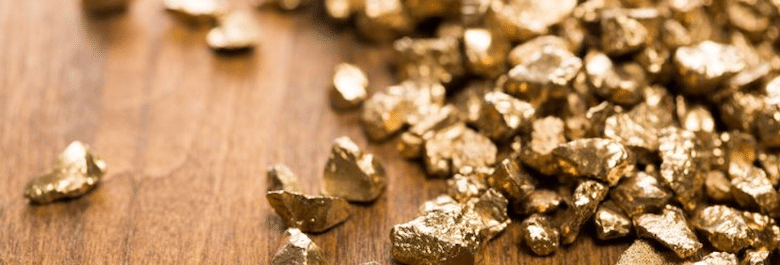
I’ve had 35 years of experience in the precious metals industry and have been employed in four different refineries, being the owner of one. It’s been my pleasure documenting the precious metals refining process so that it’s better understood by those who have an interest in the subject.
Here’s a brief answer to the question, How do you refine gold and silver?
First, you will melt your gold scrap to create a homogeneous alloy which is then poured into a shot or bar and rolled into a thin sheet so it will dissolve easily in an acid called Aqua Regia. It is then placed in an acid-proof container of plastic or a glass beaker under a fume hood and covered with the aqua regia to dissolve the alloy. Once the gold alloy is dissolved it leaves behind silver in the chemical form of silver chloride that will not dissolve and must be filtered out. After filtering the acid solution containing the gold it is diluted with cold water and a chemical is added to the filtrate, (clear filtered acid containing the gold) to make the gold precipitate, (rain down) from the solution. The gold will settle to the bottom of the container as a dark to light brown powder and after the acid clarifies it is siphoned off or carefully poured off of the gold precipitate. Then the gold precipitate is washed, dried, melted, and poured into bars, or shot. This gold which you have refined using a hydrometallurgical method will be 99.9% gold. To produce 9995 Fine Gold it may need to be refined again. If 9999 or higher fineness is desired it will have to be refined by electroplating the gold in a bath of gold chloride and hydrochloric acid which will remove trace impurities that mainly consist of silver.
In the case of silver refining you melt your silver lot into a homogeneous alloy and pour it into a shot so that it will dissolve easily. Then it is placed into an acid-proof container under a fume hood and covered with an acid called Nitric Acid.
The silver will dissolve but some metals, (gold, titanium, stainless steel and platinum group metals, etc.) will not dissolve and will settle to the bottom of the container and then have to be filtered out and separated to produce a clarified solution, (filtrate) containing the silver just as you did in the example above with the gold only this time it is the gold and other metals that are the impurities that must be filtered out of the silver nitrate and acid solution. After filtering and diluting the acid, salt water or hydrochloric acid is added to the silver nitrate and acid solution to precipitate the silver as silver chloride. This is then washed and filtered to separate it from the acids. The silver is still bound in the silver chloride and will not melt easily into a metal form without substantial losses due to vaporization so it must be chemically converted, (reduced) to a pure metallic form then washed, dried, melted, and poured into bars which will be 99.9% pure silver.